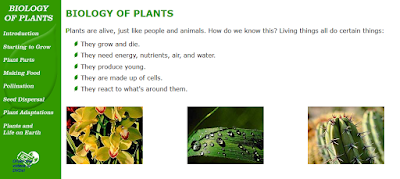Vertebrates
We know that scientists have divided all animals into two main groups. We also know that animals which have a backone are vertebrates animals, and animals which don't have a backbone are invertebrates.
There are many more invertebrates than vertebrates on Earth. Invertebrates all share one characteristic: they don't have a backbone or an internal skeleton. Most invertebrates lay eggs. Invertebrates can be classified into six groups: arthropods, molluscs, sponges, cnidarians, echinoderms and annelids.
Have you ever explored a tide pool while at the beach?
A majority of the animals you see in a tide pool are classed as vertebrates, which means they lack backbones.
Animal nutrition
Unlike plants, animals can't make their own food. This is because animal cells don't have choroplats which contain chlorophyll.
All animals need to take in oxygen to get energy from food. Different animals have different methods of obtaining oxygen. Waste gases are expelled from the body. The exchange of gases inside the body is called respiration.
Mammals: lungs.
Fish: gills.
Amphibians: gills.
Animals reproduction
Most animals reproduce through sexual reproduction. In sexual reproduction two individuals are needed, a male and a female. We can classify animals into two groups by studying how their young are born. Animals that are born from eggs are oviparous, and animals that develop inside their mother are viviparous.
Life is a struggle for survival. In order to protect themselves and to get food, animals have to adapt to their environment. Some adaptations are physical. The frog's webbed feet help it to swim, and the eagle's hooded beak is perfect for tearing meat. Other adaptations are adaptations of behaviour: camouflage, symbiosis, mimicry.
Hedgehogs have existed for about fifteen million years. A hedgehod feeds mainly on small invertebrates. In winter, it's difficult to find enough food, so the hedgehod needs to hibernate. Hibernation is a type of adaptation.
























































